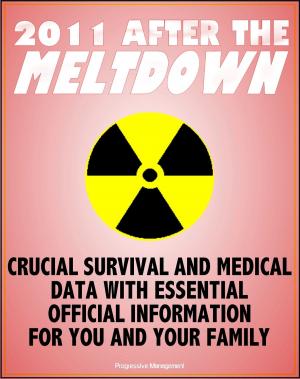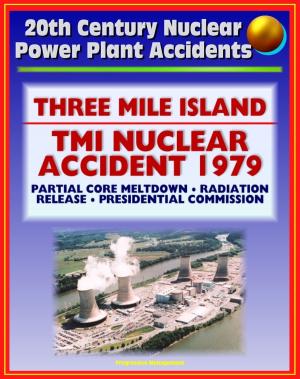Coercive Nuclear Campaigns in the 21st Century: Understanding Adversary Incentives and Options for Nuclear Escalation - Posing Four Grim Options, Plausibility of Conquest, U.S. Nuclear Forces
Nonfiction, History, Military, Nuclear Warfare, United States| Author: | Progressive Management | ISBN: | 9781310026881 |
| Publisher: | Progressive Management | Publication: | July 10, 2016 |
| Imprint: | Smashwords Edition | Language: | English |
| Author: | Progressive Management |
| ISBN: | 9781310026881 |
| Publisher: | Progressive Management |
| Publication: | July 10, 2016 |
| Imprint: | Smashwords Edition |
| Language: | English |
This excellent report has been professionally converted for accurate flowing-text e-book format reproduction. This report examines why and how regional powers armed with nuclear weapons may employ those weapons coercively against the United States or U.S. allies during a conventional war. We argue that the problem of intra-war deterrence - preventing nuclear-armed adversaries from escalating during a conventional conflict - is arguably the most important deterrence challenge facing the United States in the 21st century.
The strategic environment facing the United States, its allies, and its potential adversaries has changed dramatically since the end of the Cold War. For nearly four decades, the United States and its NATO allies planned to use nuclear weapons to defend themselves from a major Warsaw Pact invasion of Western Europe. The armies of the Warsaw Pact were perceived to be too formidable to confront with a strictly conventional defense - at least at spending levels that would be acceptable to the North Atlantic alliance. Nuclear weapons were thus NATO's "trump card": NATO planned to employ nuclear weapons coercively during a war to raise the costs and risks to the Warsaw Pact and thereby convince them to halt their military operations before they could inflict a total defeat on NATO.
Today, the global balance of power is reversed. Now U.S. military forces are the most formidable, and potential U.S. adversaries need trump cards of their own to stalemate the United States. This reversal in the balance of power helps explain why the United States now seeks to delegitimize nuclear weapons and reduce their role in the world. Unfortunately, the same conditions that once made NATO rely on nuclear weapons will now likely compel other countries - including several potential U.S. adversaries - to rely upon nuclear weapons.
INTRODUCTION * THE LOGIC OF COERCIVE NUCLEAR ESCALATION * Escalation and the Fate of Enemy Leaders * Escalation and the Role of Nuclear Weapons * IS ESCALATION RATIONAL? POSING FOUR GRIM OPTIONS * EVIDENCE OF COERCIVE NUCLEAR DOCTRINES * IDENTIFYING THE MOST DANGEROUS CONFLICTS * Plausibility of Conquest * Vulnerability to Regime Change * Blinding and Disarming Military Operations * Escalation Risks in Potential Conventional Conflicts * COUNTERARGUMENTS * CONCLUSION * Implications for War Plans and Conventional CONOPS * Implications for U.S. Nuclear Force Structure
This excellent report has been professionally converted for accurate flowing-text e-book format reproduction. This report examines why and how regional powers armed with nuclear weapons may employ those weapons coercively against the United States or U.S. allies during a conventional war. We argue that the problem of intra-war deterrence - preventing nuclear-armed adversaries from escalating during a conventional conflict - is arguably the most important deterrence challenge facing the United States in the 21st century.
The strategic environment facing the United States, its allies, and its potential adversaries has changed dramatically since the end of the Cold War. For nearly four decades, the United States and its NATO allies planned to use nuclear weapons to defend themselves from a major Warsaw Pact invasion of Western Europe. The armies of the Warsaw Pact were perceived to be too formidable to confront with a strictly conventional defense - at least at spending levels that would be acceptable to the North Atlantic alliance. Nuclear weapons were thus NATO's "trump card": NATO planned to employ nuclear weapons coercively during a war to raise the costs and risks to the Warsaw Pact and thereby convince them to halt their military operations before they could inflict a total defeat on NATO.
Today, the global balance of power is reversed. Now U.S. military forces are the most formidable, and potential U.S. adversaries need trump cards of their own to stalemate the United States. This reversal in the balance of power helps explain why the United States now seeks to delegitimize nuclear weapons and reduce their role in the world. Unfortunately, the same conditions that once made NATO rely on nuclear weapons will now likely compel other countries - including several potential U.S. adversaries - to rely upon nuclear weapons.
INTRODUCTION * THE LOGIC OF COERCIVE NUCLEAR ESCALATION * Escalation and the Fate of Enemy Leaders * Escalation and the Role of Nuclear Weapons * IS ESCALATION RATIONAL? POSING FOUR GRIM OPTIONS * EVIDENCE OF COERCIVE NUCLEAR DOCTRINES * IDENTIFYING THE MOST DANGEROUS CONFLICTS * Plausibility of Conquest * Vulnerability to Regime Change * Blinding and Disarming Military Operations * Escalation Risks in Potential Conventional Conflicts * COUNTERARGUMENTS * CONCLUSION * Implications for War Plans and Conventional CONOPS * Implications for U.S. Nuclear Force Structure















